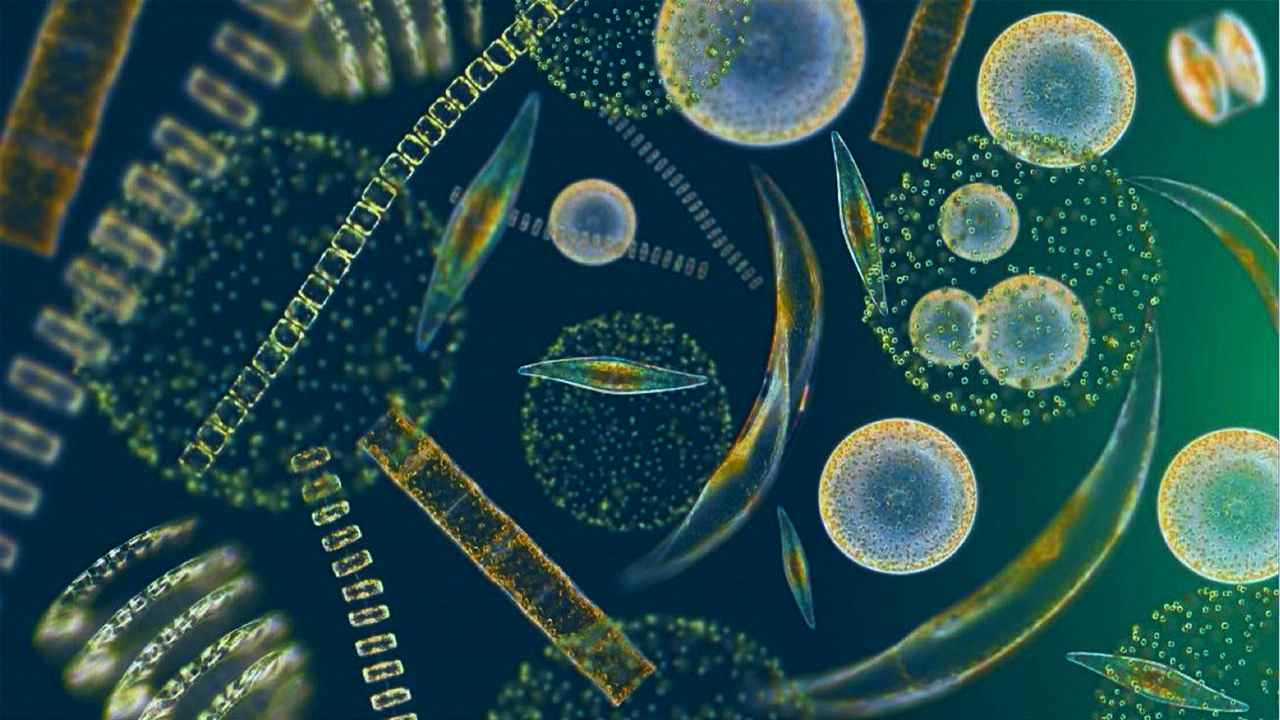The tones of blue and green in the world’s oceans could be a lot more prominent by the end of the century, marine biologists predict. The colour change will come from tiny marine organisms called phytoplankton, and other colourful members of oceans responding to rising water temperature and climate change. These tiny planktons are the primary producers of food in aquatic ecosystems — they convert sunlight into food for fish by photosynthesis. “In the same way that plants on land are green, phytoplankton are green as well…so the amount and different types of phytoplankton affect the colour of the ocean surface,” Anna Hickman, co-author of the paper from the University of Southampton,
told the Guardian. [caption id=“attachment_6024921” align=“alignnone” width=“1280”] A bloom of phytoplankton seen near the Chatham Islands off New Zealand in December, 2013. Image: Wikimedia Commons[/caption] Detecting and keeping track of these changes is very important because phytoplankton run about half of all the photosynthesis that takes place in the world, making them a critical part of a healthy ecosystem. The scientists used a computer model to predict what the changes in temperature, ocean currents and acidity might do to the growth and diversity of phytoplankton. One novel consideration in the study was the changes in how light is absorbed or reflected at the ocean surface. [caption id=“attachment_6024931” align=“alignnone” width=“1280”]
 A mix of phytoplankton and zooplankton seen under a microscope in a drop of ocean water.[/caption] The researchers found that if temperatures at the ocean surface rise above 3 degrees Celsius this century as expected, the colour of most of the world’s oceans will change. “Crudely speaking, where the water is currently quite blue because the phytoplankton [have a] relatively low biomass, you are going to see the water getting more blue…and where the ocean is relatively more green because the biomass is higher, you are going to see [it] getting [greener],” Hickman
told the Guardian. While this colour change won’t be perceptible to the naked eye, the team of researchers expects that satellite images could be used to monitor the change.
A mix of phytoplankton and zooplankton seen under a microscope in a drop of ocean water.[/caption] The researchers found that if temperatures at the ocean surface rise above 3 degrees Celsius this century as expected, the colour of most of the world’s oceans will change. “Crudely speaking, where the water is currently quite blue because the phytoplankton [have a] relatively low biomass, you are going to see the water getting more blue…and where the ocean is relatively more green because the biomass is higher, you are going to see [it] getting [greener],” Hickman
told the Guardian. While this colour change won’t be perceptible to the naked eye, the team of researchers expects that satellite images could be used to monitor the change.
Effects of global warming on phytoplankton could intensify the colour of oceans: Scientists.
Advertisement
End of Article


)
)
)
)
)
)
)
)
)



